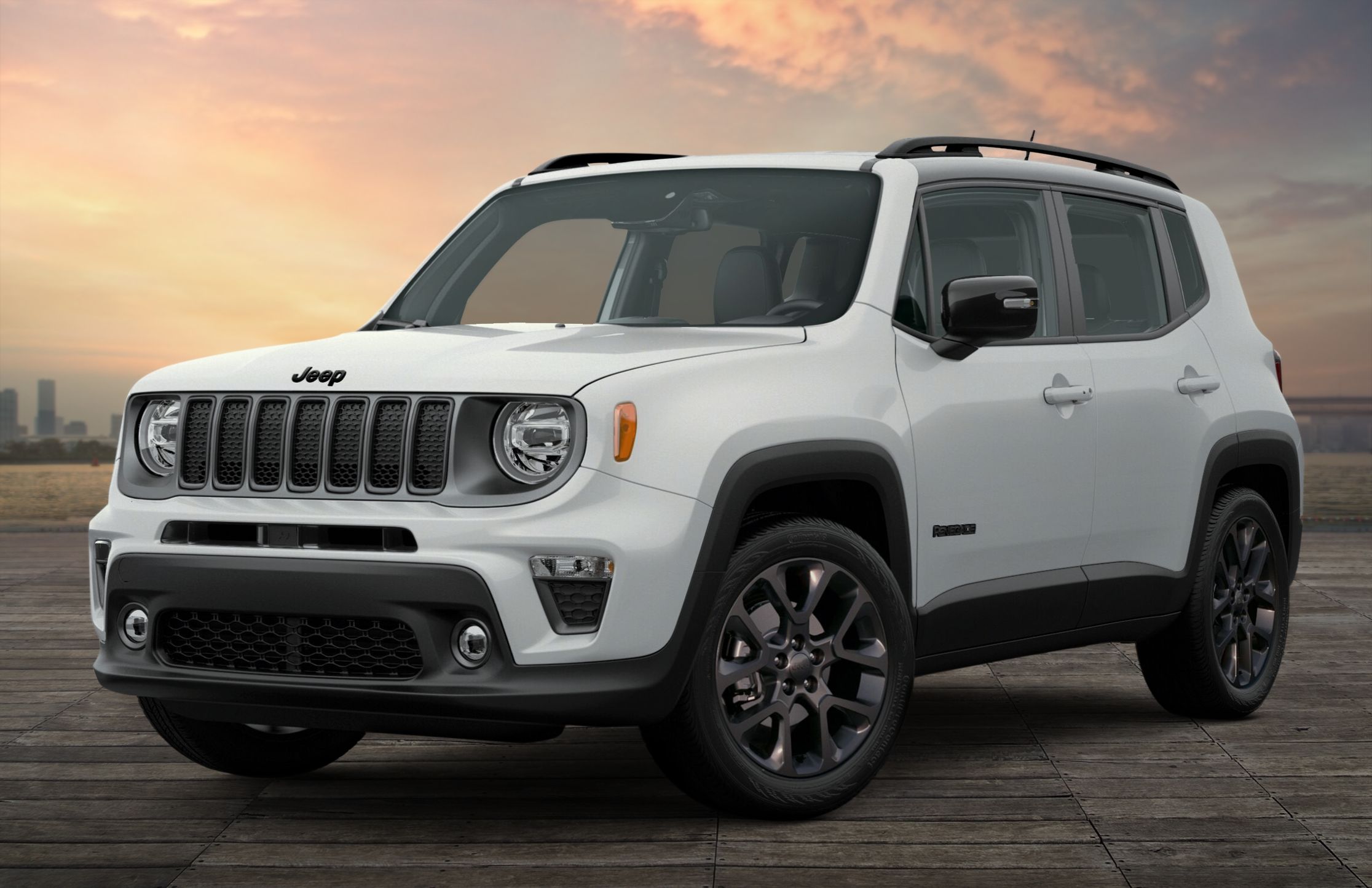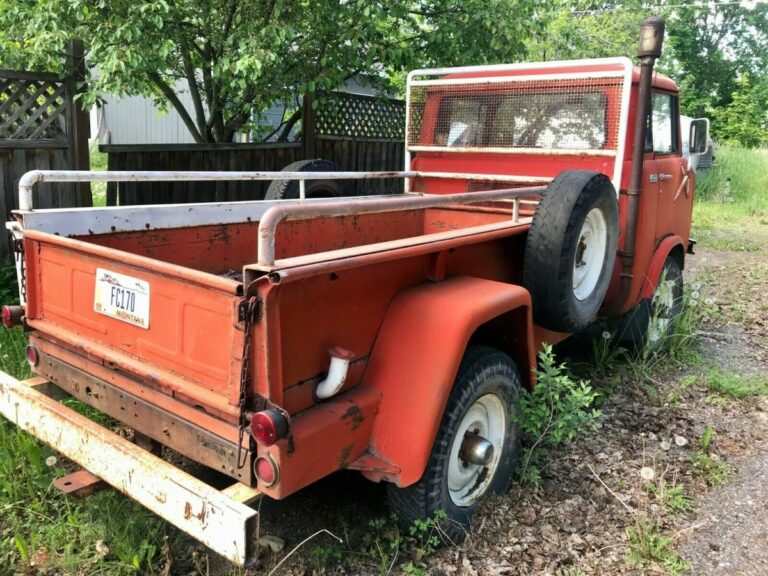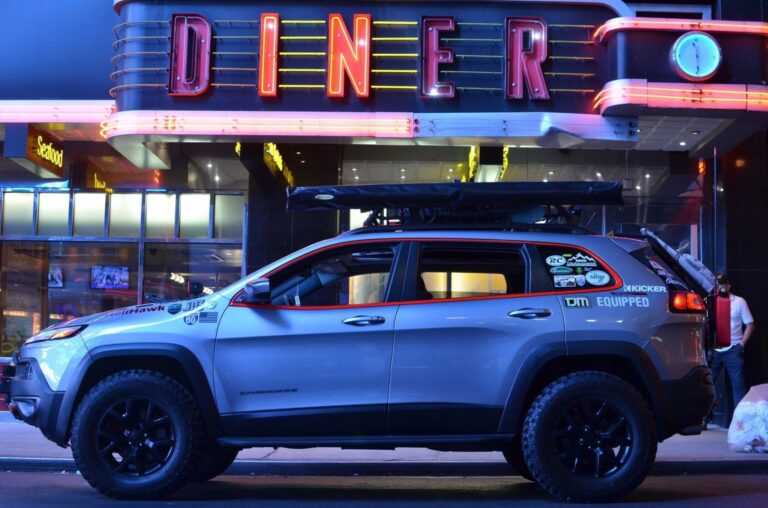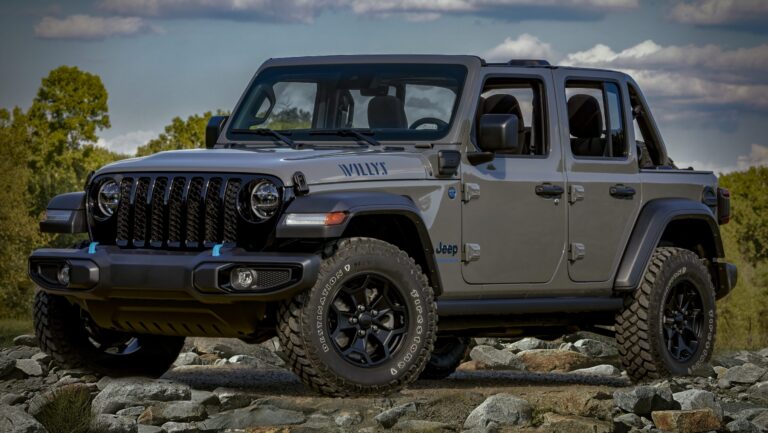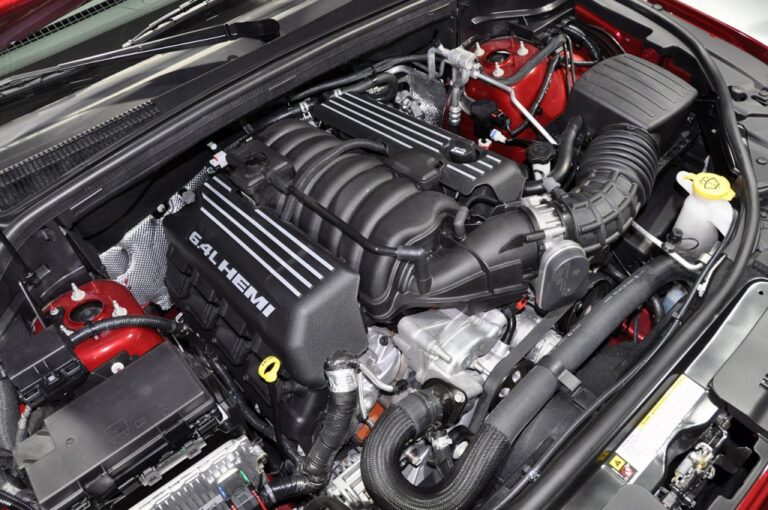Jeep CJ7 Body For Sale: Your Ultimate Guide to Revival and Restoration
Jeep CJ7 Body For Sale: Your Ultimate Guide to Revival and Restoration jeeps.truckstrend.com
The Jeep CJ7, an icon of American automotive history, evokes images of rugged trails, open-air freedom, and timeless design. Produced from 1976 to 1986, this venerable off-roader captured the hearts of enthusiasts worldwide. Today, decades after its last production model rolled off the line, the CJ7 remains a highly sought-after vehicle for restoration, customization, and pure nostalgic enjoyment. However, time, rust, and adventurous off-road exploits often take their toll on the original body. This is where the quest for a "Jeep CJ7 body for sale" begins – a pivotal step for anyone looking to breathe new life into one of these beloved machines.
Finding a replacement body for your CJ7 isn’t just about fixing a problem; it’s about laying the foundation for a dream build. Whether your existing body is riddled with rust, severely damaged from an accident, or you’re simply starting a project from scratch, acquiring a new or refurbished body shell is often the most efficient and effective path to a pristine, road-worthy CJ7. This comprehensive guide will navigate you through the world of CJ7 bodies for sale, covering everything from why you might need one to the practicalities of purchase and installation.
Jeep CJ7 Body For Sale: Your Ultimate Guide to Revival and Restoration
Why Buy a Jeep CJ7 Body? The Motivation Behind the Purchase
The decision to invest in a replacement CJ7 body stems from a variety of common scenarios faced by owners and restorers. Understanding these motivations can help frame your search and ensure you choose the right solution for your specific needs.
1. Restoration Projects: Bringing a Classic Back to Life
Many CJ7s, especially those from the late 70s and early 80s, are now considered classic vehicles. A full restoration often necessitates replacing the original body due to decades of wear and tear, sun exposure, and general fatigue. A new body provides a perfect canvas to restore the vehicle to its factory glory or even better.
2. Rust Remediation: Battling the Inevitable
Rust is the archenemy of vintage vehicles, and the CJ7 is no exception. Areas like floor pans, rocker panels, rear corners, and the cowl are notorious for succumbing to corrosion, especially in regions with harsh winters or high humidity. While patches can be applied, extensive rust often makes a body replacement a more durable and cost-effective long-term solution than endless fabrication and repair.
3. Accident Repair: Rebuilding After Damage
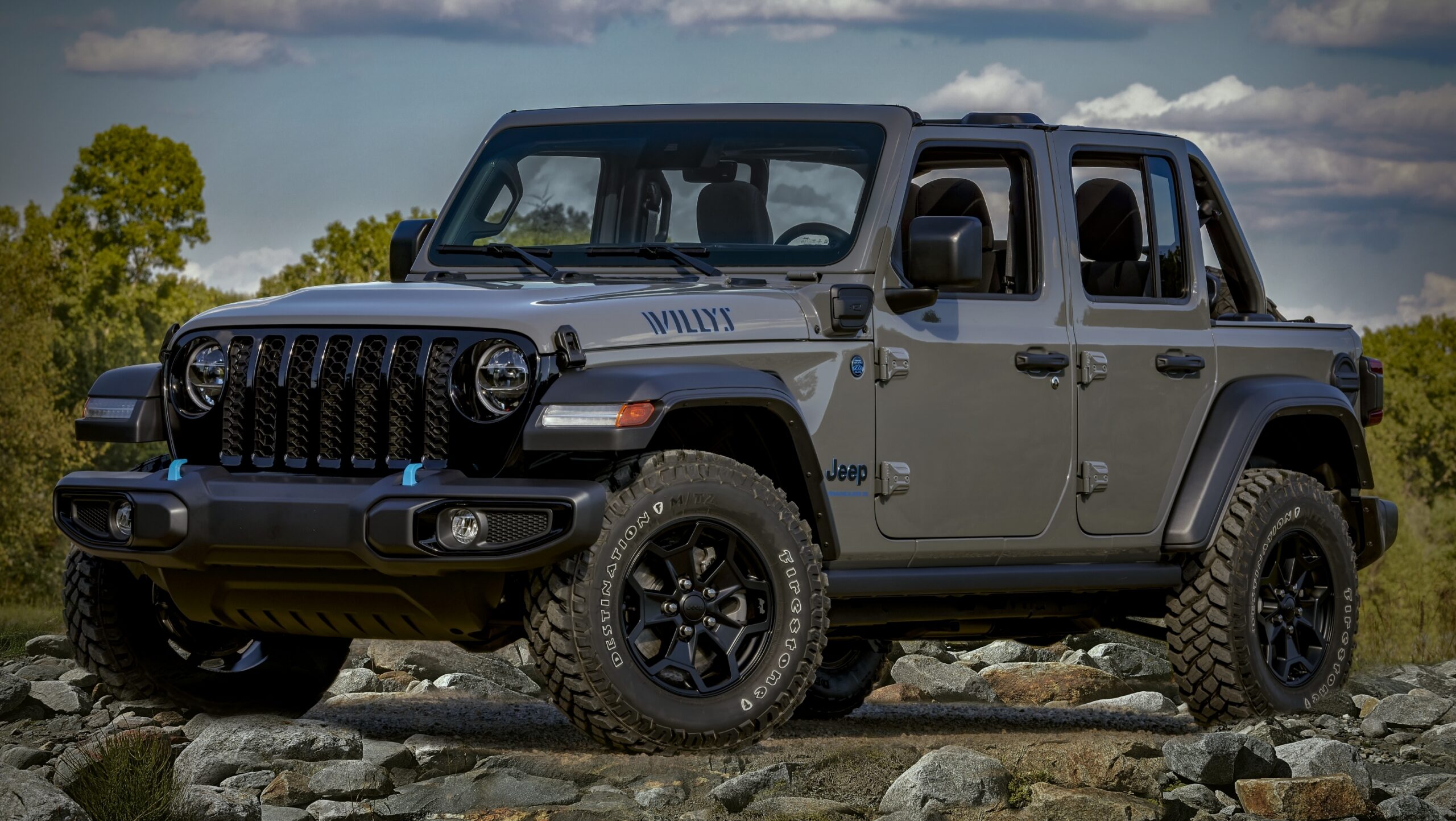
Unfortunately, accidents happen. If your CJ7 has sustained significant structural damage to its body, finding a replacement body shell can be more straightforward and economically sensible than attempting complex bodywork and frame straightening.
4. Custom Builds and Hot Rods: Starting with a Clean Slate
For enthusiasts looking to create a highly customized CJ7, perhaps with modern drivetrain components, a new body offers a pristine starting point. This eliminates the need to undo previous modifications or repair existing damage, allowing for a cleaner, more efficient build process.
5. Donor Vehicle Alternative: Efficiency and Cost Savings
Sometimes, finding a complete CJ7 in good body condition but with mechanical issues can be expensive. Purchasing just a solid body can be a more focused and potentially cheaper alternative than buying an entire rusty donor vehicle and stripping it down for parts.
Types of CJ7 Bodies Available: Original vs. Reproduction
When searching for a "Jeep CJ7 body for sale," you’ll primarily encounter two categories: original used bodies and aftermarket reproduction bodies. Each has its own set of advantages and disadvantages.
1. Original/Used CJ7 Bodies
- Pros: Authenticity is the main draw. For purists, an original body maintains the vehicle’s historical integrity. They can also be cheaper upfront, depending on condition.
- Cons: The biggest challenge is finding one in good condition. Most used bodies will have varying degrees of rust, dents, and previous repairs. Thorough inspection is critical, as hidden corrosion can quickly turn a "bargain" into a money pit. They often require significant prep work, including rust removal, welding, and bodywork.
- Where to Find Them: Salvage yards, online classifieds (Craigslist, Facebook Marketplace), dedicated Jeep forums, and specialized classic car parts dealers.
2. Aftermarket/Reproduction CJ7 Bodies
- Pros: These are brand new bodies, meaning no rust, no dents, and a consistent, straight surface to start with. They often come pre-drilled for components, saving time. Many aftermarket bodies are made from new, sometimes thicker, steel or even galvanized steel for improved rust resistance.
- Cons: Higher cost is the primary drawback. While quality has improved significantly, minor fitment issues can occasionally arise, requiring slight adjustments during installation. Purists might also object to their non-original status.
- Manufacturers: Reputable manufacturers like Omix-ADA, MD Juan, and sometimes companies like Quadratec (who often retail these brands) offer steel reproduction bodies.
- Types of Materials:
- Steel: The most common and preferred material for reproduction bodies. It replicates the original strength and repairability.
- Fiberglass: Some manufacturers offer fiberglass bodies.
- Pros: Lighter weight, absolutely no rust potential.
- Cons: Can be more prone to cracking on impact, harder to repair than steel, and may not have the same structural rigidity for serious off-roading. Also, fiberglass can "flex" differently than original steel, potentially affecting panel gaps and door closure over time.
What to Look For When Buying a CJ7 Body: A Comprehensive Checklist
A thorough inspection and informed decision are paramount when purchasing a CJ7 body. This checklist will guide you through the critical aspects to consider.
For Original/Used Bodies:
- Rust Hotspots:
- Floor Pans: Check under the carpet and from underneath the vehicle.
- Rocker Panels: These are often the first to go.
- Rear Corners/Quarter Panels: Especially around the taillights and wheel wells.
- Cowl Area: Where the windshield frame mounts and around the fresh air vents.
- Body Mounts/Hat Channels: These support the body on the frame. Rust here can compromise structural integrity.
- Dents and Damage: Assess the extent of the damage. Minor dents are fixable, but major creases or structural damage will require extensive (and costly) bodywork.
- Previous Repairs: Look for signs of bondo (body filler), poor welding, or mismatched patches. Quality repairs are fine, but shoddy work indicates more hidden problems.
- Straightness and Alignment: Check door gaps, windshield frame fitment, and overall symmetry. A twisted body will be a nightmare to align.
- Completeness: Does it come with doors, tailgate, windshield frame, or dash? Often, a bare body shell is sold, but sometimes you get lucky with attached components.
For Aftermarket/Reproduction Bodies:
- Manufacturer Reputation: Stick with known and respected manufacturers to ensure quality control and accurate dimensions. Read reviews.
- Material: Confirm whether it’s steel or fiberglass, and if steel, inquire about the gauge (thickness) and any rust-preventative treatments (e.g., e-coating, galvanization).
- Fitment: While new, minor adjustments may still be needed. Reputable sellers will confirm specific year compatibility.
- Shipping & Crating: Ask about the crating method to prevent damage during transit. Inspect upon delivery for any shipping damage before signing off.
General Considerations:
- Pictures and Videos: Demand high-resolution photos and videos from multiple angles, especially for used bodies.
- Seller Communication: A responsive and knowledgeable seller is a good sign. Ask detailed questions.
- In-Person Inspection: If at all possible, inspect the body in person. Nothing beats seeing it firsthand.
The Process of Body Swapping: A Brief Overview
Once you have your replacement body, the real work begins. A body swap is a significant undertaking, but entirely feasible for the dedicated DIY enthusiast.
- Preparation: Gather tools (hoist or engine crane, jacks, stands, wrenches, sockets), clear a large, level workspace, and organize all existing parts. Document everything with photos and videos, especially wiring and component locations.
- Disassembly: Systematically remove all components from the old body: interior, wiring, fuel lines, brake lines, steering column, pedals, windshield, doors, tailgate, etc. Label everything.
- Frame Inspection and Repair: With the old body off, this is the opportune time to thoroughly inspect your CJ7 frame. Address any rust, cracks, or damage. Sandblast and paint the frame for a truly fresh start. Replace body mounts.
- Mounting the New Body: Carefully lower the new body onto the cleaned and repaired frame. Use new body mount bushings and hardware. Crucially, spend time on alignment, ensuring even gaps and proper fitment before tightening everything down. Shims may be needed.
- Reassembly: Begin transferring all the components you removed from the old body to the new one. This is a reverse of the disassembly process, often with new hardware, wiring harnesses, and interior components.
- Paint and Finish: Once the body is mounted and components are in place, it’s time for bodywork (if any) and paint. This can be done before assembly if preferred, but test-fitting is easier with a bare body.
Challenges: Expect seized bolts, brittle wiring, and unexpected rust in hidden places. Patience, a good set of tools, and possibly a second pair of hands are invaluable.
Budgeting for a CJ7 Body Project: Beyond the Body Itself
The cost of the body is just one piece of the financial puzzle. A comprehensive budget will prevent surprises down the line.
- Cost of the Body: As detailed in the price table, this varies wildly.
- Shipping Costs: Freight shipping for a full body can be substantial, often ranging from several hundred to over a thousand dollars, depending on distance.
- Body Mount Kit: Essential for proper mounting and vibration dampening (typically $100-$300).
- Hardware: New nuts, bolts, and fasteners are highly recommended (budget $100-$200+).
- Wiring Harness: If your old one is brittle or damaged, a new full harness can be $500-$1000+.
- Interior Components: Seats, dash pads, gauges, carpet, door panels – these add up quickly.
- Paint and Bodywork: This is where costs can skyrocket. DIY materials might be $500-$1000. Professional paint jobs can range from $3,000 to $10,000+, depending on quality and prep work.
- Unexpected Expenses: Always budget an extra 10-20% for unforeseen issues.
Tips for a Successful CJ7 Body Purchase and Swap
- Research Extensively: Understand the nuances of CJ7 bodies, common issues, and reputable sellers.
- Inspect Thoroughly: Whether in person or via detailed media, leave no stone unturned, especially for used bodies.
- Ask Questions: Don’t be afraid to query sellers about condition, history, material, and shipping.
- Document Everything: Photos and videos during disassembly are invaluable for reassembly.
- Plan Ahead: Have all your tools, space, and a clear understanding of the process before you start.
- Join Communities: Online forums (e.g., JeepForum.com, CJ-7.com) and local Jeep clubs are fantastic resources for advice, tips, and even finding parts.
- Be Patient: A body swap is a marathon, not a sprint. Rushing leads to mistakes.
Jeep CJ7 Body For Sale: Estimated Price Guide
Please note: Prices are highly variable based on condition, manufacturer, location, seller, and market demand. These are estimates for the United States market and do not include shipping unless specified.
| Item Category | Description | Estimated Price Range (USD) | Notes |
|---|---|---|---|
| Used Original Steel Body | |||
| Poor/Heavily Rusted | Suitable only for major sections or if you have extensive fabrication skills | $200 – $800 | Expect significant rust repair, panel replacement, and bodywork. |
| Fair/Needs Work | Moderate rust, some dents, requires significant bodywork | $800 – $2,500 | Often the starting point for DIY restorations; balance of cost and required effort. |
| Good/Minimal Rust | Minor surface rust, few dents, relatively straight | $2,500 – $5,000+ | Rare finds; can be almost ready for paint with minimal prep. |
| Aftermarket Reproduction Steel Body | |||
| Bare Tub | Just the body shell, no doors, tailgate, windshield frame | $3,000 – $4,500 | E-coated or primed, ready for prep and paint. |
| With Doors & Tailgate | Includes matching doors and tailgate, sometimes windshield frame | $4,500 – $7,000+ | More complete package, saves time sourcing individual components. |
| Aftermarket Fiberglass Body | |||
| Bare Tub | Lighter, rust-proof alternative | $2,500 – $4,000 | Less common, offers different characteristics than steel. |
| With Doors & Tailgate | $4,000 – $6,000+ | ||
| Associated Costs | |||
| Shipping (Domestic) | Freight shipping for a full body within the US | $500 – $1,500+ | Varies greatly by distance and carrier. |
| Body Mount Kit | New rubber or polyurethane bushings and hardware | $100 – $300 | Essential for proper body-to-frame isolation and alignment. |
| Basic Paint Materials | For DIY, primer, paint, clear coat, sandpaper, etc. | $500 – $1,000 | Does not include labor or professional equipment. |
| Professional Paint Job | Shop labor, prep, materials, multiple coats | $3,000 – $10,000+ | High-quality paint jobs can exceed this range; depends on desired finish and shop rates. |
| Additional Hardware | New bolts, clips, fasteners, weatherstripping, etc. | $100 – $300+ | Small costs that add up. |
| Wiring Harness (New) | If old one is brittle or damaged | $500 – $1,000+ | Critical for electrical reliability. |
Frequently Asked Questions (FAQ) About Jeep CJ7 Bodies
Q1: Can I use a CJ5 body on a CJ7 frame?
A1: No, the CJ5 and CJ7 have different wheelbases and frame lengths. A CJ5 body is shorter and will not fit directly onto a CJ7 frame without significant modification, which is generally not practical.
Q2: Are all CJ7 bodies the same across all production years (1976-1986)?
A2: For the most part, yes, CJ7 bodies are largely interchangeable across all years. There might be minor differences in mounting points for certain accessories or wiring pass-throughs depending on the year and trim level, but the core body tub dimensions remain consistent.
Q3: Is fiberglass better than steel for a CJ7 body?
A3: It depends on your priorities. Fiberglass is lighter and completely rust-proof, which are significant advantages. However, it can be more prone to cracking upon impact, harder to repair seamlessly, and some purists prefer the original feel and strength of steel. Steel reproduction bodies are often preferred for serious off-roading or authentic restorations.
Q4: How difficult is it to swap a CJ7 body myself?
A4: A CJ7 body swap is a challenging but achievable DIY project for someone with mechanical aptitude, a good set of tools, and plenty of space. The biggest hurdles are often dealing with seized bolts, ensuring proper alignment, and managing the weight of the body. Having a second pair of hands is highly recommended.
Q5: Do new aftermarket CJ7 bodies come painted?
A5: Almost all new reproduction bodies come in bare steel (often e-coated for rust prevention during shipping) or a primer finish. They will require full body prep and paint after purchase and before final assembly.
Q6: What’s the biggest challenge when undertaking a CJ7 body replacement project?
A6: The biggest challenge is often dealing with unexpected rust on the frame or seized hardware during disassembly. Aligning the new body perfectly and ensuring all components transfer smoothly can also be time-consuming. Budgeting for unexpected costs and having patience are key to overcoming these challenges.
Conclusion
The pursuit of a "Jeep CJ7 body for sale" is more than just a transaction; it’s the beginning of an exciting journey to revive a classic. Whether you opt for a carefully sourced original tub or a pristine reproduction, securing a solid foundation is the most critical step in any CJ7 restoration or custom build. By understanding the types of bodies available, knowing what to look for, planning your budget meticulously, and approaching the swap process with patience and informed effort, you can transform a rust bucket into a trail-ready legend or a show-stopping classic. The reward of seeing your renewed CJ7 hit the road or conquer the trails, built on a solid body, is an unparalleled satisfaction for any Jeep enthusiast.
